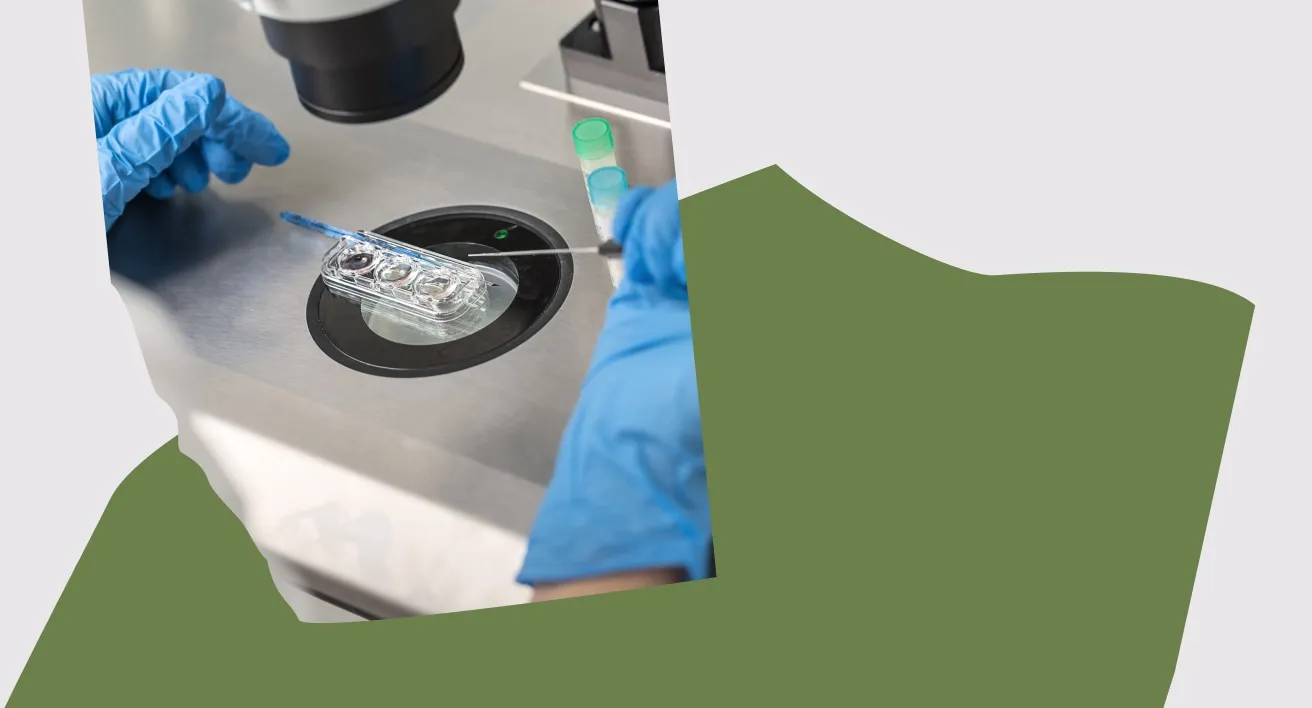Fresh vs frozen embryo transfer: what’s the difference?

Fresh vs frozen embryo transfer: what’s the difference?
Whether you’ve already frozen and stored embryos or are thinking about freezing embryos with a partner or donor, or are just curious about parts of in vitro fertilization (IVF) treatment, you’re in the right place. We’re here to help explain the differences between fresh and frozen embryo transfers.
What’s an embryo?
In a lab, embryologists join an egg and sperm in a petri dish to fertilize the egg. An embryo is a fertilized egg.
What is IVF?
In vitro fertilization (IVF) is a type of fertility assistance technology. In IVF, embryologists combine an egg and sperm outside of the body (“in vitro” literally translates to “in glass,” where the egg is fertilized) to create a healthy embryo that can be transferred to a woman’s womb and carried to term.
How are eggs retrieved?
In a typical menstrual cycle, a woman’s body only releases one egg. In fertility treatment, doctors prescribe hormonal medication to stimulate the ovaries and to release multiple eggs. After about two weeks of daily injections and regular monitoring appointments, the patient will go under anesthesia for an egg retrieval. In the procedure, a doctor retrieves as many mature eggs as possible.
Once the eggs are retrieved, they can be stored and frozen by themselves. They can also be combined with sperm to create embryos, and those embryos can be transferred to a woman’s uterus or frozen for later use.
What is a fresh embryo transfer?
In a fresh embryo transfer, the recently created embryo isn’t frozen first before being transferred to a woman’s uterus.
The embryo grows in a lab, typically for 3-5 days, before it’s placed into a catheter and transferred into a woman’s uterus. If the embryo implants successfully into the uterine lining, it can be carried to term, like any other pregnancy.
What is a frozen embryo transfer?
In a frozen embryo transfer, the embryo is frozen first and later thawed before being transferred to a woman’s uterus. Frozen embryo transfers are sometimes referred to as “FETs” for short.
The embryo grows in a lab, typically for 5-7 days, before it’s cryopreserved. Depending on the circumstances, such as advanced maternal age or recurrent pregnancy loss, your doctor might recommend PGT-A (pre-implantation genetic testing for aneuploidy), which tests the embryos for genetic abnormalities, before freezing them. It’s also possible to discover the embryos’ genders by testing them.
When it’s time to use the embryos, the doctor will advise which one(s) to thaw. The doctor will prescribe hormonal medication, which will help prepare the uterine lining to accept the embryo in the days leading up to the transfer.
On transfer day, an embryologist thaws the embryo carefully, removes the cryoprotectant (a solution that helps keep the frozen embryo safe), and places it into a catheter so that the doctor can transfer it into the woman’s uterus. If the embryo implants successfully into the uterine lining, it can be carried to term, like any other pregnancy.
Differences between fresh and frozen embryo transfers
Fresh and frozen embryo transfers are very similar, with one significant exception: when the embryo was created and when it was transferred. In both cases, the woman carrying the embryo will take hormonal medication before the transfer to prepare her uterine lining to accept the embryo.
Another notable difference: To screen embryos for genetic disorders, they have to be tested and frozen afterward, as the results can take many weeks to be completed and the window for transfer will have passed. Many doctors recommend PGT-A testing to ensure healthy embryos are frozen, especially for people over the age of 35 or who have a health condition they’re concerned about passing on.
Success rates: Frozen embryo transfers vs fresh embryo transfers
According to a 2017 study that tracked transfers that resulted in live births, women under 35 got slightly better results from fresh embryo transfers (47.4%) versus frozen (44.1%).
For women between 35 and 37 years old, success rates between fresh and frozen embryo transfers were very similar (39.3% fresh, and 40.1% frozen, respectively). Women’s ovarian reserve naturally decreases as they age, so many doctors recommend frozen embryo transfers for women who want to become parents in their late 30s.
As women grow older, their egg reserve decreases over time, so for women over 37, frozen embryo transfers have better results.
Despite the slightly better success rates with fresh transfers in some cases, many doctors recommend frozen embryo transfers with PGT-A so that they can ensure the embryos are likely to implant and result in a pregnancy.
How much does an embryo transfer cost?
The average cost of an frozen embryo transfer is between $5,000-9,000, including medication. The average cost of a fresh cycle (including one fresh transfer) is $19,000-21,000, including medication. The cost difference is so significant because a fresh cycle includes an egg retrieval and the fertilization of eggs and sperm.
Summary
Doctors recommend whether a fresh or frozen embryo transfer is right for patients based on the age of the egg provider and whether or not the embryos need to be tested for genetic abnormalities. If you’re considering a fresh or frozen embryo transfer, think about requesting a quote from us — Gaia Plans cover both fresh and frozen embryo transfers affordably.






